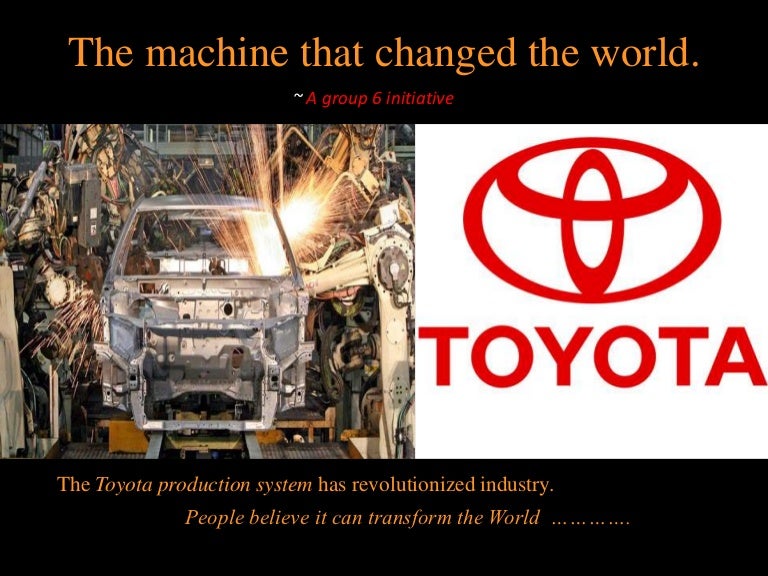

TPS improves all aspects of safety for employees and customers.

The company’s zero-defect policy and continuous effort to reduce costs enables the company to deliver quality at a price customers can afford. TPS succeeds because it puts the customer first.
#Toyota production system free#
TPS improves customer satisfaction by providing products that are free of defects. Areas that have wasted movement, overproduction, underproduction, inefficient transportation, unnecessary inventory, and defects are identified and improved until waste is eliminated.

Just-In-Time (JIT), Kanban, Taki-Time, and Kaizen are used to spot waste. The high-quality and cost-competitive products Toyota produces are directly linked to Toyota’s ability to reduce waste throughout the production process. TPS reduces waste, increasing efficiency and reducing costs. These tools help workers spot inefficiencies, errors, or potential defects and empowers them to stop the assembly line so that defects are not included in the final product. Overall, TPS uses several lean methods to help reduce errors and improve quality: Kaizen, 5S, 5 Whys, and Poka-Yoke. TPS improves quality in products and processes. Employees become central in discovering problems and solving them. The system uses continuous improvement to empower businesses by creating a culture that entrusts employees with key responsibilities at each stage of production. The Toyota Production System provides numerous advantages for those who choose to implement it as a means of improving their current production system. Advantages of the Toyota Production System In the Toyota Production System, each person follows the same set of principles, which focus on improving production processes based on the customer’s need and the product’s quality, as well as safety in the plant and on the road. It is the culture adopted by employees and management alike. The Toyota Production System (TPS) is the culmination of the company’s dedication to continuous improvement. David Landes, an economic historian from Harvard describes it as the most important technical innovation since Ford’s successful implementation of the moving assembly line. The MIT researchers found that TPS was so much more effective and efficient than traditionalmass production that it represented a completely new paradigm and coined the term lean production to indicate this radically different approach to production.What Is the Toyota Production System? Toyota’s lean production system has transformed the manufacturing industry. Widespread recognition of TPS as the model production system grew rapidly with the publication in 1990 of The Machine That Changed the World, the result of five years of research led by the Massachusetts Institute of Technology. Under Ohno’s leadership, JIT developed into a unique system of material and information flows to control overproduction. He decreed that Toyota operations would contain no excess inventory and that Toyota would strive to work in partnership with suppliers to level production. Kiichiro Toyoda, son of Sakichi and founder of the Toyota automobile business, developed the concept of JIT in the 1930s. Eventually, this simple concept found its way into every machine, every production line, and every Toyota operation. This enabled great improvements in quality and freed people to do more valuecreating work than simply monitoring machines for quality. Sakichi Toyoda, founder of the Toyota group of companies, invented the concept of jidoka in the early 20th Century by incorporating a device on his automatic looms that would stop the loom from operating whenever a thread broke. The concepts of just-in-time (JIT) and jidoka both have their roots in the prewar period. Outside Japan, dissemination began in earnest with the creation of the Toyota- General Motors joint venture-NUMMI-in California in 1984. Beginning in machining operations and spreading from there, Ohno led the development of TPS at Toyota throughout the 1950s and 1960s, and the dissemination to the supply base through the 1960s and 1970s. TPS is maintained and improved through iterations of standardized work and kaizen, following PDCA, or the scientific method.ĭevelopment of TPS is credited to Taiichi Ohno, Toyota’s chief of production in the post-WW II period. TPS is comprised of two pillars, just-in-time and jidoka, and often is illustrated with the “house” shown at right. The production system developed by Toyota Motor Corporation to provide best quality, lowest cost, and shortest lead time through the elimination of waste.


 0 kommentar(er)
0 kommentar(er)
